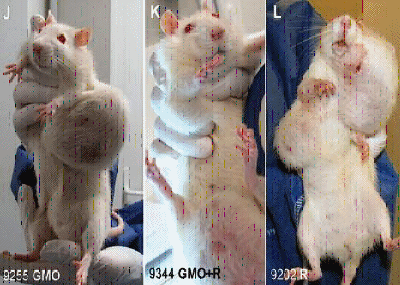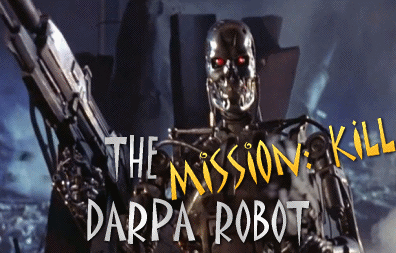 |
|||||||||||||||||||||
|
|
|||||||||||||||||||||
|
|
|||||||||||||||||||||
If you are brand new to the word 'Archon' and have never read anything about the Sophia Myth, it would take a little effort on your part to catch up. Suffice is to say, there is an intra-species living on the planet who are afraid of life and their immortality. They plot and scheme incessantly to gain control of everything. Because of their fear and sense of inferiority, they have gravitated towards 'Archontic' mentality. Perhaps if 'control' isn't the main incentive for many of them, greed and money certainly are. These soulless cyborgs are the 'control freaks' of the World who hate humanity - including their own. We call them the 'infected intra-species' or by their more contemporary label - 'psychopaths'. Mainstream is catching on, but they are mostly in 'panic mode'. The reality of all the corruption, evil, and ugliness that psychopaths have caused in the World is overwhelming to the normal human and many people are still in denial. Yet, all of us are recipients of pain and heartbreak, directly or indirectly. Those of us who are aware and who have feistier personalities, have elected to pick up our sword and fight back. In actuality, we have become humanity's warriors. Each person uses a 'sword of expertise' that is their particular strength. I have chosen the sword of the 'written word'. I resist my 'enemies' by exposing them whenever possible in my writings. This has been my intent. As David Icke wrote: 'Human Race - Get Off Your Knees' - The Lion Sleeps No More' . . . (certainly an apropos theme for 'The Roar of the Lion' series on this website). My next article will deal more in-depth on how others like yourself may become a 'warrior'. I believe each of us is equipped with an inner core of strength and wisdom waiting to be released. For now, I thought it would be helpful if I exposed a few treacherous psychopaths who, in my opinion, are responsible for the suffering and deaths of thousands of unsuspecting people. (Who knows the exact figure)? I only hope that they all receive their just due in our lifetimes. Please examine their faces on the animation below. Their profiles follow. I do not want to give them a great deal of 'press' and attention. They don't deserve our focus except as a vehicle to alert others. Once you know their names, you can do further research on the web.
PROFILES: HUGH GRANT - MONSANTO
About MONSANTO: In the typical slippery nature of Monsanto’s legislation-based actions, the biotech giant is now virtually guaranteed the ability to recklessly plant experimental GM crops without having to worry about the U.S. government and its subsequent courts. The Monsanto Protection Act buried deep within the budget resolution has passed the Senate, and now nothing short of a presidential veto will put an end to the ruling. In case you’re not familiar, the Monsanto Protection Act is the name given to what’s known as a legislative 'rider' that was inserted into the Senate Continuing Resolution spending bill. Using the deceptive title of Farmer Assurance Provision, Sec. 735 of this bill actually grants Monsanto the immunity from federal courts pending the review of any GM crop that is thought to be dangerous . . . Monsanto is a huge international GMO that plans to control and IS controlling more and more of the international food supply. They aren't just a little start-up research group studying food supply. They are in 60 countries, have over 14,000 employees, and have revenues of $6 billion. They have invested over 500 million in one of their destructive schemes - genomics and biotechnology. I call it what it is - ‘depopulation’ hiding behind ‘Mother Theresa’ goals. Data linking GMOs and
pesticides to human health ailments continues to emerge, as a new report
put together by the Ministry of Health in Cordoba, Argentina has found
that increased levels of crop spraying in Argentina’s most extensively
farmed areas has resulted in a large increase of cancer rates for those
who live in the vicinity. According to the report, deaths from cancerous
tumors have as much as doubled in areas where 'genetically modified' (GM)
crops are grown and agro-chemicals are used. That’s not really
surprising, given the fact that numerous studies have linked them to
cancer, and other detrimental health ailments. The highest death rate was
recorded in the ‘Pampa Gringa’ area. This is where most GM crops are
grown and where the most pesticides are used. Making up a large portion of
the Cordoba region, this area and other areas in the region have cancer
rates that are way above the national average. One whistleblower using
an assumed name, ‘Miguel‘, talked of Monsanto's domination in our
colleges and universities. He also said that after watching them and
working with them for 25 years, it was very clear that their care for the
safety and welfare of people and health is seriously in question. Monsanto
has been accused numerous times of fraud, threats to health, ecological
disasters, and false evidence. Rats fed a lifelong diet of
one of the best selling strains of genetically modified corn suffered
tumors and multiple organ damage, according to a controversial French
study recently published.The report is set to ignite the debate over whether
GM crops are safe. Gilles-Eric Seralini of the University of Caen and
colleagues said rats fed on a diet containing NK603 - a seed variety from
crop giant Monsanto made tolerant to dousings of the best selling
weed killer Roundup - or given water containing Roundup at levels
permitted in the United States, died earlier than those on a standard diet.
The animals on the GM diet suffered mammary tumors, as well as severe
liver and kidney damage. The researchers said 50 percent of males and 70
percent of females died prematurely, compared with only 30 percent
and 20 percent in the control group. Seralini was part of a team that
flagged previous safety concerns based on a shorter rat study in a
scientific paper published in December 2009 but this takes things a step
further by tracking the animals throughout their two-year lifespan. Significantly, the majority of tumors were detectable only after
18 months - meaning they could be discovered only in long-term feeding
trials. The study - led by molecular biologist Professor Gilles-Eric
Seralini, a critic of GM technology, was published yesterday in US Journal
Food and Physiological Pathway’. "To be frank, it looks
like random variation to me in a rodent line likely to develop tumors
anyway," he said. He also claimed Professor Seralini was an
anti-GM campaigner and that previous studies questioning the
technology’s safety had not withstood scrutiny. Mutated pests are adapting to
Biotech crops in unpredicted and disturbing ways. Genetically modified
crops are often designed to repel hungry insects. By having toxins built
into the plant itself, farmers can reduce their use of environmentally
unfriendly insecticide sprays. But as any first-year evolutionary biology
student can tell you, insects are like the 'Borg' in Star Trek: they
quickly adapt. And this is precisely what is happening - but in ways that
have startled the researchers themselves. The discovery is a wakeup call
to geneticists because it has highlighted the importance of having to
closely monitor and counter pest resistance to biotech crops. The
development also raises the question of the potential futility of having
to change the genetic structure of crops in perpetuity; given that insects
are constantly evolving, to what degree will geneticists have to go to
ensure crop immunity to pests? And what does that say to the ongoing
safety of such crops as far as human consumption is concerned? Because most of the laws regulating
genetically modified crops, plants and foods were created in 1986,
crop-producers like Scotts have found ways to get around them, according
to a report in the JULIE GERBERDING (CDC) - CENTER FOR DISEASE CONTROL Julie Gerberding, the former director of the U.S. Centers for Disease Control and Prevention, has been President of Merck’s vaccine unit for the past 18 months as. At Merck, she has been learning the 'ins and outs' of a $5-billion-a-year operation that makes 14 of the 17 vaccines the CDC recommends for children, and nine of the 10 recommended for adults. It would be an understatement to say this job carries a huge social responsibility, both to insure steady supplies of vaccines already on the market, and to develop new ones. More importantly, she is responsible for the welfare and safety of everyone who will be vaccinated. The following info was obtained from an interview that 'Xconomy' had with Gerberding. The question/answer format gives insight to her opinions and focus . . . Xconomy: Can you talk a little about what kind of scope you have in Merck Vaccines, in terms of people, facilities, and the R&D portfolio? Julie Gerberding: Vaccines have been in Merck’s DNA forever. We have a tradition of being the scientific source of many of today’s modern vaccines. We have a very strong pediatric portfolio, and one of our unique strengths is our adult portfolio. Where we haven’t traditionally focused is in the global environment. We see tremendous unmet need, and tremendous opportunity for Merck to leverage our innovations in ways that bring these products to the kids who need them most. X: You occasionally hear market research reports say the vaccine market is poised to grow, and build on the success of Gardasil and Pfizer’s pneumococcal vaccine (Prevnar). Do you see that phenomenon happening? JG: No matter what market you are in, we want to deliver value at the best possible price. The fastest way to achieve a price improvement is through volume. So, the more global manufacturing we do, the more we cover our fixed costs, and the less expensive on a per-dose basis our vaccines will become. With a vaccine, it’s about how can we continue to position the product, or evolve the product in its life cycle so that it continues to deliver value to people. That can be forever. Our measles vaccine has been around a long time, and it’s still delivering enormous public health value. A bigger challenge is that we, all of us in the world of vaccines, can imagine innovations, bio-process improvements, other things that might improve our ability to lower costs, or speed up production, or localize production in new markets, but the regulatory environment hasn’t caught up with our innovation capability. X: What exactly is the problem at the regulatory level? JG: In vaccines, the process is the product. Any change you make in how you process your route to the vaccine actually changes the product. Often, you are faced with needing to do clinical studies, or make macro investments in a way that would simply discourage you from moving in that direction. That’s a little different from making a tablet. As long as at the end of the day you have the stated composition of matter, and quality, there’s more flexibility. X: When you talk about regulatory agencies, and government agencies that are the purchaser of vaccines, you get into politics. That brings the whole vaccine-denier world into the equation. How big of an obstacle is that, and how do you deal with it? JG: On a global basis, it’s a small issue today. Most people in the world are so grateful to have their child immunized. They see the diseases, and understand how life-saving those vaccines can really be. If you are thinking globally, it’s not the most important obstacle we face. But it’s clearly a powerful local issue in many westernized or developed countries. It’s a growing issue. We have to work harder to engage people in the conversation. And that conversation needs to be led by trusted and credible people, not necessarily vaccine manufacturers. X: So do you just get out of the way then? JG: No, we have a responsibility. The most important component of our contribution is that we do make trustworthy, reliable products that address health needs. We should be proud of it. These are critically important products for global health and local health. We don’t need to be silent about the contribution we are making, and our employees should take pride in it. Having said that, for people who have already made up their mind that there are issues around the need for vaccines, the manufacturers are not likely to be the best resource for changing their minds. People need to hear balanced information from trusted peers, and/or their doctor. That’s what we need to learn—what really does motivate people’s behavior. The old model would say, "We just need to give people better information. If they have the facts, they’ll make the right choice." The new model is that it’s not a left-brain decision for many parents—this is a right-brain, heartfelt decision. While they can understand objectively that vaccines are important means of protection, when they are sitting with a child on the lap and deciding to give them a shot, it becomes emotional for the parent. Not all parents respond to that situation the same way. X: When you look at the landscape of vaccines, there are maybe five or so major producers of vaccines left. Do you see much innovation out there beyond those companies, in small biotechs, and in the nonprofit world? JG: I’m very bullish on vaccines, I think there is incredible innovation going on in the biotech environment. Innovations in antigens [new vaccine targets] and adjuvants [immune-boosting compounds], but also innovations in delivery methods and stability, in combinations that put more than one vaccine in a vial. There’s innovation in vaccine logistics, innovation in vaccine financing, and in partnerships, and translational research. The problem with vaccine innovation is that it isn’t fast. There’s a long runway for these products, and it takes a long time for these products to be commercially relevant and available. You have to be very patient. I’m learning. X: Have you had surprises in the switch to industry, or impressions that might surprise your peers? JG: From a personal perspective, there’s an enormous amount of learning. I’m not trained, and wasn’t brought up in a marketing environment. I have to learn how to think about value in ways that are focused on respecting what people really need and want, while at the same time keeping in mind what’s practical and feasible from a private sector perspective. Sometimes that balance is challenging. We have lots of great ideas about things we’d like to be able to do, but if they don’t make business sense, it’s going to be a lot harder for us to do them. Or, we have to be creative and think about who we can partner with. How can we move this into a nonprofit situation? Or how can we get a venture capitalist to share risk on this? Can we create a joint venture? The exciting challenge for me is how we can figure out creative ways to do the things we want to do, because they are the right thing to do even when the business model isn’t oriented toward the blockbuster. Public Response to the Gerberding interview: Maurine Meleck - SC: Prudence Dagg Aimee Doyle Jessica Erwin Alber Grim Fandango Larry In conclusion, please
avail yourself of the YouTube interview with Jon Rappoport as advertised
on this website -
Regina Dugan - DARPA Regina E. Dugan - born March 19, 1963. She obtained her Bachelor of Science and Master of Science degrees in Mechanical Engineering from Virginia Polytechnic Institute and State University in 1984 and 1985 respectively, and her Doctorate degree in Mechanical Engineering in 1993 from the California Institute of Technology (Caltech). She was co-chairwoman of the Organization for Women at Caltech, an institution where 80% of graduate students were men. While heading the Defense Advanced Research Projects Agency (DARPA) - Google’s Regina Dugan violated ethics rules by awarding government contracts to a company she founded, according to a Department of Defense investigation. The Department’s Inspector General found that while at DARPA Dugan had 'conflicting financial interests' with a company called RedXDefense. Building on her DARPA experience involving land mines, Dugan, her father, and her uncle used their firm to found RedXDefense in 2005, a company specializing in technology for screening humans, vehicles and packages for explosive threats. RedXDefense builds technologies to detect explosives, gunshot evidence and narcotics. A Wired report from 2012 raised speculation over the ability of the company’s products to achieve their purposes, and quoted one defense official as saying RedXDefense tech was less efficient than a 'coin flip' when it came to detecting bombs. Dugan acted as CEO of RedXDefense from 2005
until 2009, when she took the top spot at DARPA, From artificial mammal brains to
prosthetics that feel like real limbs, the military’s blue-sky researchers are
aiming to bring man and machine closer than ever before. You've probably never
looked at a mammal’s brain and thought - “Gee, I wish I could yank that out of
its skull and shrink it onto a chip.” Nor have you likely gazed upon a colony
of ants and remarked, “Wouldn’t it be great if we could get spy drones to
work together like that?” That’s because you don’t work for the Defense
Advanced Projects Research Agency, the Pentagon’s way, way out science and
technology arm. Their annual budget request, which they made public on Thursday,
reads like something out of a lost Philip K. Dick notepad. DARPA, for the
uninitiated, acts as the Pentagon’s blue-sky research agency, always looking
beyond the horizon for the technologies which will have the greatest impact in
the future.
Dugan co-founded Dugan Ventures, an investment firm, with her father Vince Dugan, and his twin brother John Dugan, and she served as the company’s President and CEO. According to her official biography, Regina Dugan served in senior executive positions in three companies with responsibilities ranging from the development of strategic business relationships, legal and financial matters, as well as the building of a direct sales, marketing, and distribution capability throughout the US, Europe, and Asia. During her tenure in these companies, Dr. Dugan was responsible for approximately $35M in fundraising and business development activities. In a March 2010 appearance before the House Armed Service Committee’s subcommittee on terrorism, unconventional threats and capabilities, Dugan outlined her vision for DARPA’s research goals, which includes everything from plant-based vaccines to bio-metics (using biological systems as the models for technological solutions). She used her time before lawmakers to make the point that the U.S. needs to invest more in higher education and industry to develop an 'elite army of futuristic techno-geeks'. Dugan has applied for and received numerous patents, either alone or with others. For example, her first patent, issued in 1989, was for a system for venting gas from a liquid storage tank. In 2009, Dugan was granted a patent for a mobile device to be carried by dogs to detect explosives. That same year, she and others at RedXDefense were granted patents for a security system that tracks visitors at amusement parks and other multiple-entry public venues and for threat screening systems that include sample collectors and analyzers.Her lastest endeavor was to join Zynga and she is now a Vice President. The company was founded in July 2007 and headquartered in San Francisco, CA. It is a developer and provider of social game services that work on mobile phone platforms. She's also involved in electronic tattoos and pills. “We got to do a lot of epic shit when I was at DARPA,” Dugan said onstage at D11. But the stuff she is working on at Motorola is pretty cool and totally creepy too . . .
Dugan said. “Boredom is the enemy of innovation.”
OBAMA - 2008 - 2015
We all know his M.O. by now. There aren't enough negative words to put in print about what this Reptilian/Archon/psychopath has been involved with. The worst is yet to be exposed. __________________________________
The Coming Messiah NIMROD, OSIRIS, APOLLO, YALDABAOTH Does the Word of God in Daniel give us a hint that the Antichrist will be able to reproduce the dark magic and scale of Nimrod's empire?
Some have speculated that this refers to the Antichrist being a homosexual. Although it is true that most within the occult are bisexual (for use in ritual magic), it is believed this is a prophetic clue linking the coming man of sin with Nimrod. This powerful working of 'dark magic' and esoteric wisdom will be reproduced one more time in human history. The coming transmogrification of a man will invite Lucifer himself to come and co-habit this enhanced man-god. He will become the reincarnation of Nimrod—the Antichrist! Nimrod possessed both a demonic intelligence and a supernatural strength that enabled him to enslave people through tyranny and force. He demanded that everyone ascribe their happiness to him and him alone. He became the first ruler of the known World (the first New World Order) and established the first One-World religion. Nimrod is the perfect type and shadow in the Old Testament of the Antichrist. The Antichrist will be unstoppable as a warrior, his cruelty will know no bounds, he will enslave the world as the new leader of the New World Order, and he will establish a One-World Religion to draw all men away from the true God and Creator of mankind. No other figure in history or the Bible, not even the pharaohs of Egypt, comes close to personifying the Antichrist the way that Nimrod did. Nimrod would be the perfect world leader for today. He would wear a
Giorgio Armani suit, have a disarming smile, possess the personality
perfect for TV, have a physique like that of the Greek gods, and have a
wisdom drawn from the deepest well of the ascended masters of the New Age
throughout time. His words would drop like honey from his perfect,
genetically altered lips, and his transhuman enhanced blue eyes would seem
to look straight into your soul. He would be able to mesmerize the masses
into following him without question, and he would engineer a society that
reflects his true personality: the perfect blending of sophistication and
savagery. High culture and blood would run through all the streets of the
cities and nations that he would build and rule. Safety, security, health,
pleasure, and prosperity would be extended to those who gave unquestioned
loyalty. This is also a perfect description of the Antichrist—truly, the
reincarnation of Nimrod Implantable technology that could be used to ID every single human being on earth is on its way. For example, the U.S. military (DARPA) has serious programs afoot to equip soldiers with implanted RFID chips, so keeping track of troops becomes automatic and worldwide. Many social critics believe the expansion of this kind of ID is inevitable. Some see it as a positive: improved crime fighting, universal secure elections, a positive revolution in medical information and response, and never a lost child again. Others see the perfect Orwellian society - a Big Brother who, knowing all and seeing all, can control all. And some see the first big, fatal step toward the Singularity, that moment when humanity turns its future over to software. But regardless of your opinion, the cover of Time Magazine last month says it is coming whether you 'like it or not'. You probably have your own list of obsessed money-driven, evil, callous deviants - especially those within the World organization of pedophiles. It might be beneficial to think about the psychopaths that you would like to see exit from the planet and decide if you wish to assist this goal by becoming a warrior. Until our next meeting . . .
|




 the
Pentagon’s forward-thinking 'Weapons Development Division'. She reportedly exited all RedXDefense affiliations at that time, but has
maintained a longstanding financial stake in the company. Sworn in
on July 20, 2009, Regina Elvira Dugan is the first female Director to lead
the Defense Advanced Research Projects Agency
the
Pentagon’s forward-thinking 'Weapons Development Division'. She reportedly exited all RedXDefense affiliations at that time, but has
maintained a longstanding financial stake in the company. Sworn in
on July 20, 2009, Regina Elvira Dugan is the first female Director to lead
the Defense Advanced Research Projects Agency




